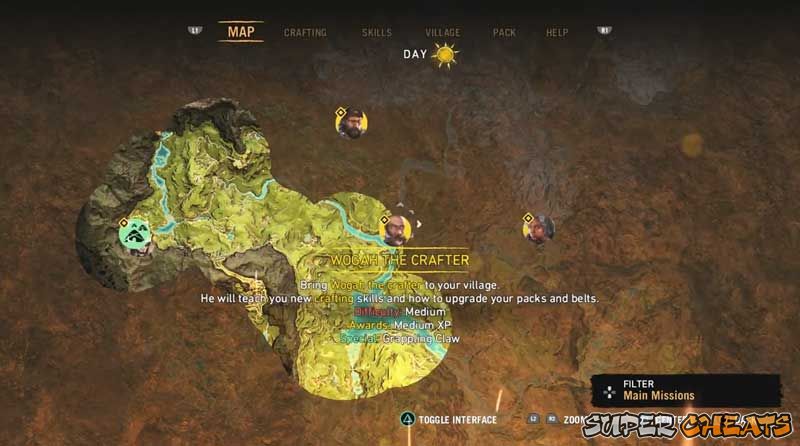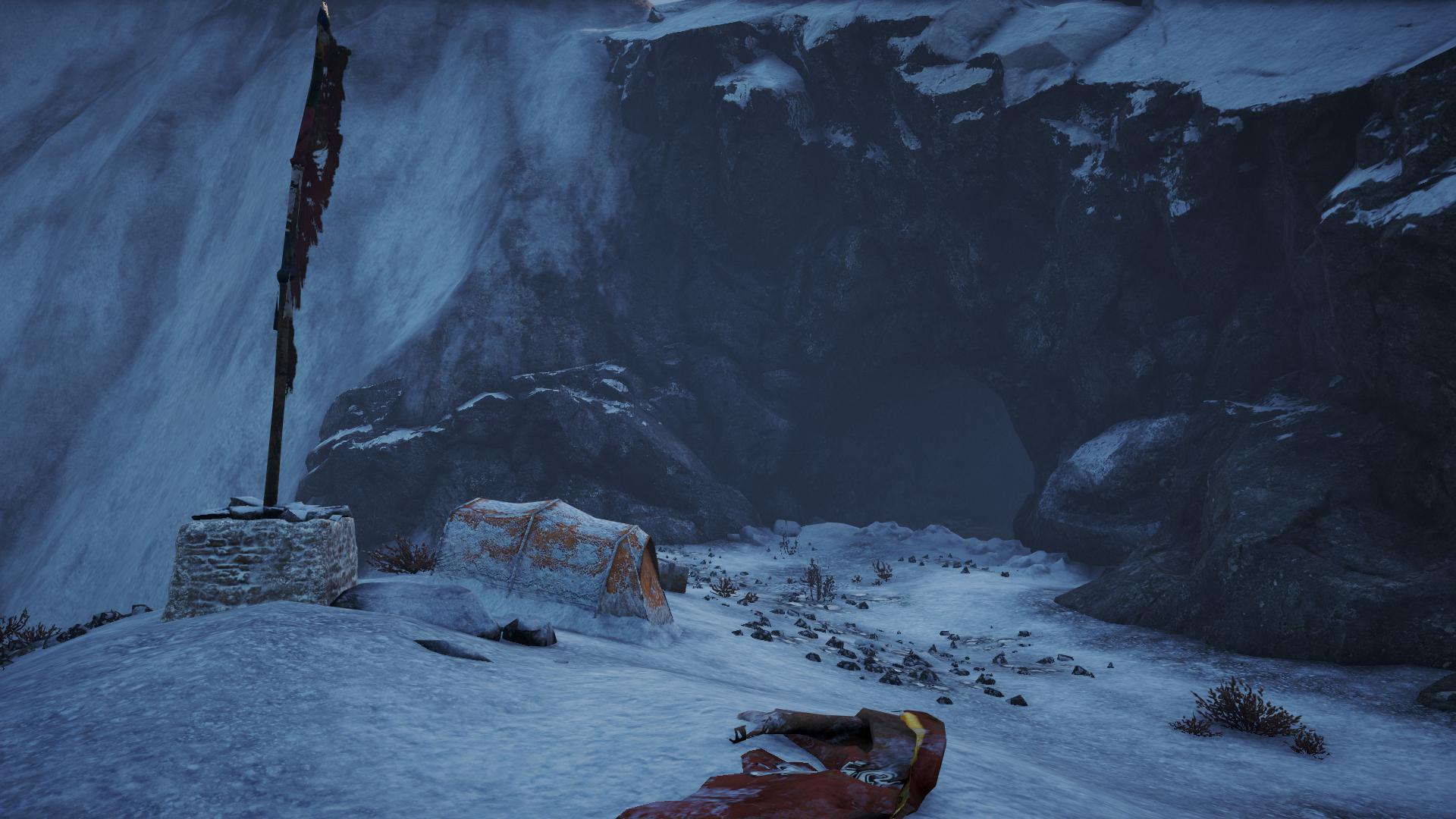

The Udam are going extinct from "Skull-Fire", a disease which does not infect any other tribe.
Vision of Ice, the chapter in which Takkar goes on a spiritual journey to "see through the eyes of the Udam", makes very powerful use of the words "Why do we keep dying?". Later he says it to Ull and Dah after killing them, as they had earned his respect. Takkar says it twice early in the game, once over the body of a slain beast he helped to hunt, and once over the body of a fellow tribesman. "Walk free" pops up a lot as a phrase the Wenja use to honor the fallen. Despite being portrayed as a successful apex predator, the youngest known sabre-toothed cat remains in Europe date to 28,000 years ago and they were likely already rare by then, given their conspicuous absence in paleolithic art. The top ranged weapon is a composite bow that wouldn't be invented for another 8000 years. While agriculture does seem to have been brought into Europe by West Asian migrants, this process doesn't begin until around 3000 years after the game's events a people like the Izila would have been completely absent in Mesolithic Europe. The languages spoken by the Wenja, Udam, and Izila are all based on Proto-Indo-European (or, to be more specific, a theoretical "Proto-Proto-Indo-European"), which in reality seems to have not reached the Carpathian Mountains from its homeland in the Pontic-Caspian steppe until around 7000 years later (at least according to the most widely accepted hypothesis ). Crocodiles became extinct in Europe about 5 million years before the events of the game (the claimed species disappeared 25 million years ago and never lived in Europe in the first place, but in Asia). Megacerops, apart from being endemic to North America, went extinct during the Late Eocene over 33 million years ago. While Europe did have a species of jaguar, it went extinct over 1.5 million years before the events of the game. Likewise, cave bears went extinct 12000 years prior to the game's events.  Eurasian cave lions went extinct 2000 to 3000 years prior to the game's events. Amazing Technicolor Wildlife: The Oros valley crocodiles are a vivid mixture of mustard yellow and orange. In contrast to Takkar, he ends up heavily injured, and lives just long enough to say goodbye to Takkar and encourage him to continue searching for Oros. After tackling Takkar over the cliff to escape the Bloodfang Tiger, he falls all the way down a slope laden with sharp boulders and jagged tree stumps. Almost Dead Guy: Takkar's mentor Dalso at the start of the game. But the Udam definitely appear to fill the "big strong savage cannibal cave guy" niche. All Cavemen Were Neanderthals: Not literally! The story takes place well after Neanderthals went extinct, and the game is good enough not to throw them into its Anachronism Stew. 1 Million B.C.: The game takes place in a valley somewhere in Eastern Europe at the end of the Ice Age, home to three human tribes - one of fairly realistic Mesolithic hunter-gatherers, one of cannibalistic savages, and one of pseudo-Aztec sun-worshipping agriculturalists - alongside a collection of Pleistocene fauna that was either long extinct by the Mesolithic, never native to Europe or both, such as saber-toothed cats, dire wolves, and the Eocene ungulate Megacerops, alongside some more realistic inclusions such as woolly mammoths, woolly rhinos and cave lions, all mixed together in a setting of temperate forests shading into icy wastes to the north.
Eurasian cave lions went extinct 2000 to 3000 years prior to the game's events. Amazing Technicolor Wildlife: The Oros valley crocodiles are a vivid mixture of mustard yellow and orange. In contrast to Takkar, he ends up heavily injured, and lives just long enough to say goodbye to Takkar and encourage him to continue searching for Oros. After tackling Takkar over the cliff to escape the Bloodfang Tiger, he falls all the way down a slope laden with sharp boulders and jagged tree stumps. Almost Dead Guy: Takkar's mentor Dalso at the start of the game. But the Udam definitely appear to fill the "big strong savage cannibal cave guy" niche. All Cavemen Were Neanderthals: Not literally! The story takes place well after Neanderthals went extinct, and the game is good enough not to throw them into its Anachronism Stew. 1 Million B.C.: The game takes place in a valley somewhere in Eastern Europe at the end of the Ice Age, home to three human tribes - one of fairly realistic Mesolithic hunter-gatherers, one of cannibalistic savages, and one of pseudo-Aztec sun-worshipping agriculturalists - alongside a collection of Pleistocene fauna that was either long extinct by the Mesolithic, never native to Europe or both, such as saber-toothed cats, dire wolves, and the Eocene ungulate Megacerops, alongside some more realistic inclusions such as woolly mammoths, woolly rhinos and cave lions, all mixed together in a setting of temperate forests shading into icy wastes to the north. 

It released for the PS4 and Xbox One on February 23, 2016, and for the PC on March 1, 2016.įar Cry Primal provides examples of the following tropes: The game thus puts a larger emphasis on hunting, gathering resources, and crafting than its predecessor. Takkar needs to use a variety of bows, melee & thrown weapons, as well as the help of predators he can learn to tame. Taking place so long ago, this is the first Far Cry game to not feature any firearms.








 0 kommentar(er)
0 kommentar(er)
